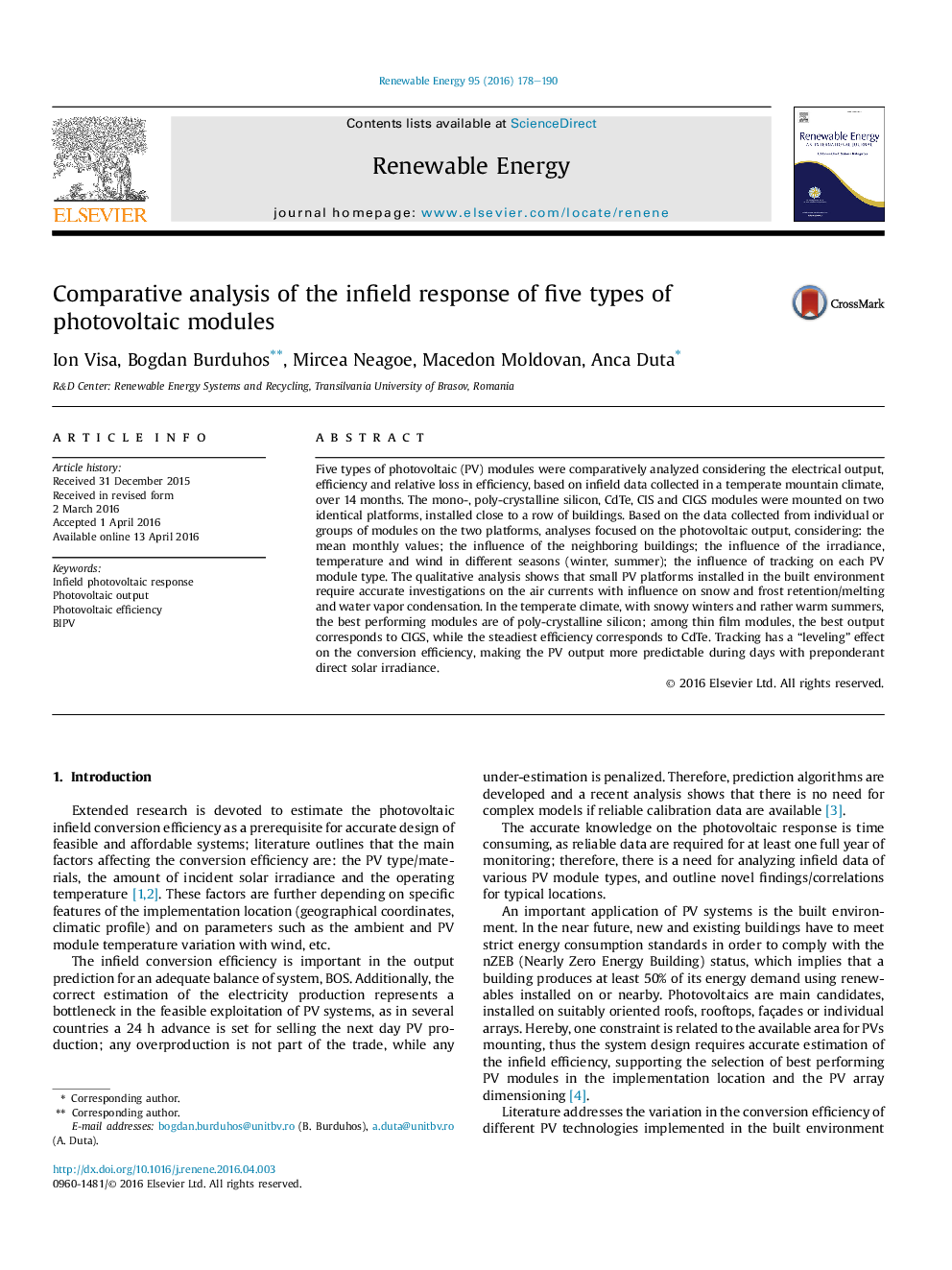| کد مقاله | کد نشریه | سال انتشار | مقاله انگلیسی | نسخه تمام متن |
|---|---|---|---|---|
| 299691 | 512440 | 2016 | 13 صفحه PDF | دانلود رایگان |
• The output of five types of PVs installed in the built environment is comparatively analyzed.
• The glass surface roughness on the modules supports snow, ice and frost formation and slow release.
• The local currents around the buildings influences the efficiency and the electrical output.
• Tracking leads to almost constant efficiencies under large direct solar radiation for m-Si, p-Si, CdTe, CIS and CIGS modules.
Five types of photovoltaic (PV) modules were comparatively analyzed considering the electrical output, efficiency and relative loss in efficiency, based on infield data collected in a temperate mountain climate, over 14 months. The mono-, poly-crystalline silicon, CdTe, CIS and CIGS modules were mounted on two identical platforms, installed close to a row of buildings. Based on the data collected from individual or groups of modules on the two platforms, analyses focused on the photovoltaic output, considering: the mean monthly values; the influence of the neighboring buildings; the influence of the irradiance, temperature and wind in different seasons (winter, summer); the influence of tracking on each PV module type. The qualitative analysis shows that small PV platforms installed in the built environment require accurate investigations on the air currents with influence on snow and frost retention/melting and water vapor condensation. In the temperate climate, with snowy winters and rather warm summers, the best performing modules are of poly-crystalline silicon; among thin film modules, the best output corresponds to CIGS, while the steadiest efficiency corresponds to CdTe. Tracking has a “leveling” effect on the conversion efficiency, making the PV output more predictable during days with preponderant direct solar irradiance.
Figure optionsDownload as PowerPoint slide
Journal: Renewable Energy - Volume 95, September 2016, Pages 178–190
